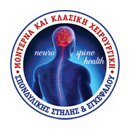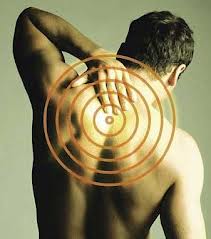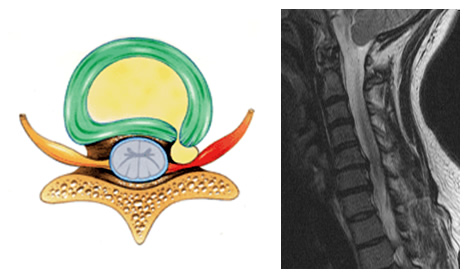Cervical spine anatomy
The cervical spine is made up of the first seven vertebrae of the spine, called cervical vertebrae, and these are placed one over the other and are connected with each other through intervertebral discs, small spinal joints (facets), and cervical joints. The cervical spine has a normal slight curve called cervical lordosis. In the center of the cervical vertebrae, there is a spinal canal, where bone marrow is found while nerve roots emerge from the vertebral foramen, which are formed between two neighboring vertebrae, in order to form the eight pairs of cervical nerves that consist the upper limbs’ nerves. The structure of cervical intervertebral discs is similar to the structure of lumbar intervertebral discs. They are surrounded by fibrocartilage, a fibrous ring, and a softer tissue, the nucleus pulposus.
How does a cervical herniated disc occur?
As we grow older and we regularly stress our intervertebral discs, the nucleus pulposus dries out and its structure gets damaged (degeneration) while the fibrous ring, surrounding the damaged and now flexible nucleus pulposus, shows signs of fissure. Therefore, abrupt movements and weight lifting are now using forces that squeeze the nucleus pulposus through the fibers of the fibrous ring and this causes a cervical herniated disc.
How often does a cervical disc herniation occur?
A cervical disc herniation is less common than a lower back disc herniation. Ninety percent of the herniated discs are located in the lower level, that is, between either the A5 and A6 or the A6 and A7 cervical vertebrae.
What are the symptoms of a cervical herniated disc?
Symptoms depend on the position of the herniated disc. When it is near the spinal canal, for example, near the part of the spine that includes the nerves, then intense pain is felt in the neck and/or the hand (nerve pain in the arm). If the position of the cervical herniated disc is central, then the main symptoms, apart from neck pain, are the same as those of the cervical part of spinal cord’s compression (instability while walking, leg spasms, urination disorder, etc.), whereas when the position is lateral, the symptoms are caused by the outgoing root that has been compressed (pain starting from the neck and reflecting to a specific point in the arm, numbing and/or muscle weakness in the hand). The size of a cervical herniated disc is of paramount importance because a large herniation can press significantly on the bone marrow as well as the vessels that provide it with blood and therefore can cause the destruction of nerve cells, which will result in a permanent neurological damage called cervical myelopathy. Other symptoms of a cervical herniated disc are the limited movement in the neck due to intense pain that can worsen when the patient lies down as well as a painful spasm of the neck and shoulder muscles.
How is a cervical herniated disc treated?
Initially, a conservative treatment is followed that includes resting and staying off work in order to limit neck movements as well as anti-inflammatory and analgesic drugs (nonsteroidal anti-inflammatory drugs, corticosteroids via oral route) administration. Selective nerve block with local anesthetics and corticoids may help in the improvement of intense initial symptoms without being a symptomatic treatment. Finally, pull-ups, physical therapy, and massage are frequently recommended but rarely have a positive impact on patients under the acute phase of signs and they frequently seem to worsen the symptoms.
When is surgical treatment recommended?
The definite treatment of a cervical disc herniation is its surgical removal. Indications of a surgical treatment are:
a) major nerve root pain that does not respond to conservative treatment
b) progressive neurological symptoms diagnosed by the neurologist or the neurosurgeon
c) the impact on the patient’s quality of life caused by the herniation, such as staying off work for more than 15 days per month
What is the applied surgical treatment?
Anterior cervical discectomy is the recommended method of surgical treatment of a cervical disc herniation.








